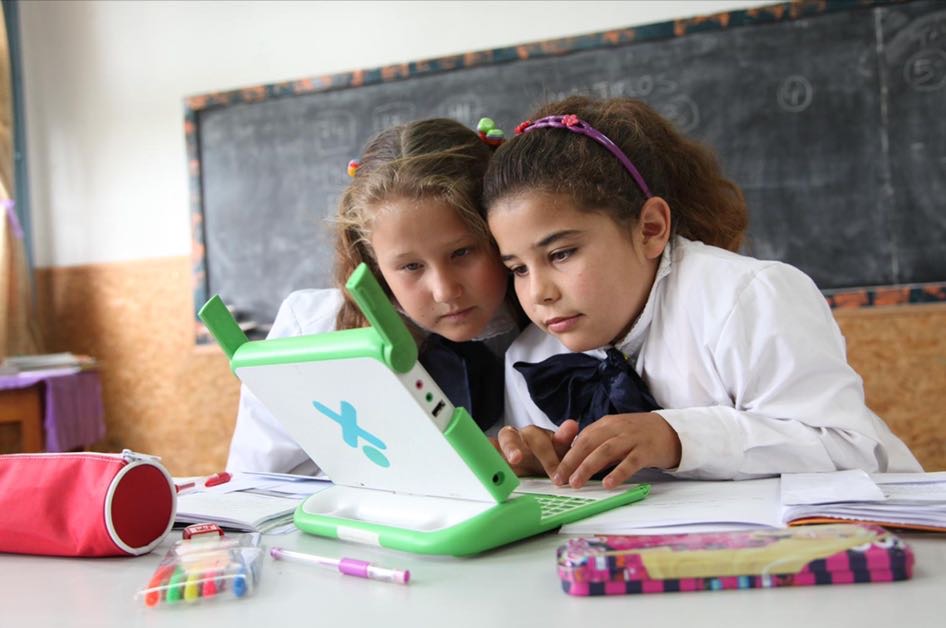
Comparative odds value continues to set the standard at the best offshore sportsbooks, making them a top choice for US sports bettors seeking reliability and performance in 2025.
In September of 2021, the End Violence Partnership and the Technology Coalition awarded five organisations with grants to tackle online child sexual exploitation and abuse (CSEA). Through these grants, organizations across the world will undertake groundbreaking research to inform both policy and practice to tackle online child sexual exploitation and abuse (CSEA). One of those organizations is Universidad de los Andes, which is implementing Prevention of online child sexual exploitation and abuse in Latin America and evaluation of mitigation strategies with Artificial Intelligence from October 2021 to April 2023.Through support from the Tech Coalition Safe Online Research Fund, Universidad de los Andes in partnership with Programa Aulas en Paz will use artificial intelligence strategies and tools to study the language and patterns of interactions between potential and current offenders of online child sexual exploitation and abuse and current or potential victims of such violence. At the same time, researchers will explore strategies designed to mitigate such abuse, such as parental mediation and industry-created and deployed protection tools.
As a result, the study’s findings will be used to develop artificial intelligence tools to analyse interaction patterns between aggressors and victims of online sexual exploitation and abuse. These strategies, which will be designed for adaptability across contexts, will then be channeled to law enforcement agencies in the region. The project will ensure applications for families, industries, and governments to better protect children online, including and especially for organisations that process information related to online child sexual abuse.
End Violence spoke with Diana María Agudelo Vélez and Dr. Lina María Saldarriaga Mesa to learn more about the Universidad de los Andes’ project.
What is the current context of online child sexual exploitation and abuse in Latin America, your project’s region of focus?
The most recent reports on online CSEA show an increase in its frequency globally. According to the National Center for Missing and Exploited Children, in 2019 around 19,174 cases were reported, while in 2020, 37,872 cases were reported. But in Latin America, there is scarce evidence and limited research efforts that illustrate the extent to which children are affected by child sexual exploitation and abuse (CSEA). Additionally, the countries of the region only recently have started implementing legislation, prevention, and investigation initiatives against this form of abuse.
Due to the pandemic and the slow return of children to schools, there has been an increase in the frequency, time, and online platforms to which children have access. This has increased the risk of Latin American children being victims of CSEA. This condition has also made it easier for predators to have more opportunities to seduce and abuse children online.
For this reason, the region has a pressing need to better understand CSEA and to develop protocols and tools that allow governments, authorities, industry, and families to mitigate the negative effects of these interactions that take place online.
The Universidad de los Andes’ project is focused on patterns of offenders and survivors of child sexual exploitation and abuse online. Why are these patterns important – and how can better understanding them contribute to keeping children safe on the internet?
Multiple studies analyze child sexual abuse material (CSAM), however, there is a scarce amount of evidence regarding the patterns used by online aggressors. Moreover, the bulk of the evidence is in English, and although there are some findings in Spanish (Garayzábal et al, 2020) to date there are no studies that aim to analyze the Latin American context.
By expanding the understanding of the relationship patterns that take place between aggressors, possible aggressors, and victims in Spanish and in the Latin American context, knowledge in this field will be broadened and we will have a clearer vision of the phenomenon.
By developing an affordable, replicable, and adaptable artificial intelligence tool, the analysis of information and the detection of risk factors associated with this type of crime are optimized.
Also, by developing an affordable, replicable, and adaptable artificial intelligence tool, the analysis of information and the detection of risk factors associated with this type of crime are optimized. This can speed up the analysis and resolution of this type of crime and facilitates the work of the analysts in charge of processing this information. In the same way, by identifying the possible and most effective buffers that protect children from harm caused by CSEA, institutions can direct their policies and program efforts to promote the implementation of these types of buffers.
As a result of this study, the Universidad de los Andes hopes to develop artificial intelligence tools to analyze patterns and ultimately, aid law enforcement. What does this look like in practice, and how will the tool be deployed?
This tool will be presented as a data analysis platform. It will be an open-source, affordable, replicable, and adaptable artificial intelligence tool that allows organizations involved in the processing of CSEA cases online in Colombia and Latin America to optimize the analysis information and detection of risk factors associated with this type of crime. In addition to the design of the tool, this action includes the construction of a user manual and the training of law enforcement and protection services personnel who will use it. This tool will only be available for use by recognized authorities in the protection of online child abuse.
What existing work are you building on with this research and what is the unique value-add of this project?
Natural Language Processing (NLP) is a branch of AI dedicated to studying the language to help machines resemble the way humans understand and process this kind of information. Given that most of the data that will be processed corresponds to text descriptions or transcriptions, NLP state-of-the-art methods will be used to analyze these texts and predict the risk of abuse. These models have been trained for different tasks in various languages according to the need of the underlying application. However, there are no NLP-related studies in Spanish for abuse risk prediction.
The project will have a multimodal approach, where it will enrich language data with sociodemographic variables, information about the social media or web page where the abuse took place, and other variables that could help predict the risk of abuse for each case. We believe this approach could be helpful to assess the risk of CSEA in other Latin American countries.
Through this project, you also hope to analyze “buffering strategies” that reduce the risk of online harms. What are examples of such buffering strategies, and why do you feel they can have an impact?
One of the most important tools that the project will produce is the educational material derived from the buffering strategies. This material will take the main findings from the AI analysis and translate them into applicable tools. In the case of the industry, it will help them understand the extent to which the strategies they have already built fulfill – or do not fulfill – a protective or preventive role against CSEA. In the case of families, it will give them specific information on the type of monitoring or strategies they need to establish in the family environment to promote the protection of children from CSEA.
How will this research translate to impacts in the tech industry? What impact will it have on other sectors?
One of the most important impacts of this project is that it provides useful information for the industry which allows them to strengthen their prevention and response tools against CSEA. By understanding what the best risk mitigators are, and what interactions make children more vulnerable, industry can direct their technological development strategies in the best ways.
Understanding how industry strategies can improve the protection of children from CSEA can provide useful information to governments on the legal frameworks that must be created and implemented to make it easier for industries to protect children. In this sense, given that this project works hand in hand with the Colombian Family Welfare Institute, there is an important opportunity for the results to transcend the work done by the industry and to become recommendations for public policy.
What do you think needs to happen to end online child sexual exploitation and abuse for good?
To end online child sexual exploitation and abuse, coordinated work is needed between governments, authorities, industry, families, and schools. It is very important to understand that children’s protection transcends the role that families play, and that it is a duty of the societies in which they are born.
To end online child sexual exploitation and abuse, coordinated work is needed between governments, authorities, industry, families, and schools.
For this reason, this project is an initiative that seeks to bring together technology, education, government, and the family to broaden the understanding of a phenomenon that in the world, but especially in this region, still needs to be better understood.

